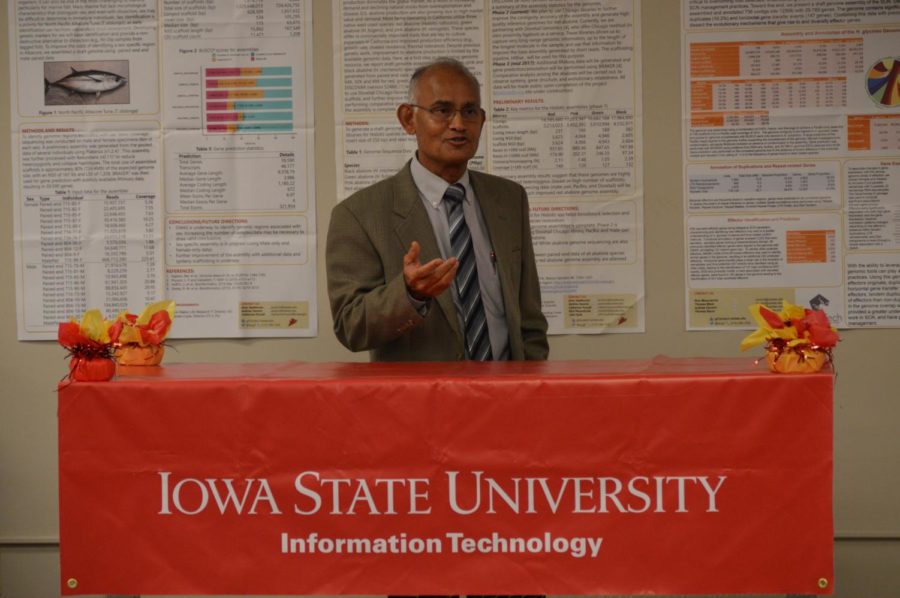New data cluster will provide more memory for ISU research
Jordyn DuBois/Iowa State Daily
Associate Dean for Research for the College of Engineering Arun Somani talks about the road to getting NOVA and the old systems Iowa State has used at the new NOVA cluster dedication on Nov. 29 in Durham Data Center. NOVA provides Iowa State with 3X more memory for research storage as well as pooling together data.
November 29, 2018
The Durham Data Center recently received a $1.2 million High Performance Computing (HPC) cluster called NOVA. This new cluster will help research in many different areas on campus.
NOVA was purchased through grants and funding through efforts by Information Technology Services (ITS), the Office of the Vice President for Research, and the Engineering, Liberal Arts and Sciences and Agriculture and Life Sciences colleges, according to the Iowa State University Information Technology article.
This provides access to petascale systems that help support large-scale computing needs for Iowa State. The new machine has three times the memory and more processors than previous clusters.
“We like to say HPC clusters turn centuries of work into weeks, allowing our researchers to tackle enormous projects that would otherwise take a lifetime,” said Jim Coyle, the director of HPC.
NOVA is the fourth type of cluster to be added to Iowa States HPC following CyEnce, HPC-Class and Condo. These similar clusters are able to store research at a smaller capacity then NOVA.
“The initiative itself provides a resource for researchers that is much larger than any individual researcher or department or college could afford,” said Sarah Nusser, vice president for research.
She also said 121 researchers have bought in both individually and in groups to help purchasing parts of the HPC system.
Nusser said with NOVA, researchers are able to make significant contributions to their fields as well as increase competitiveness of their funding. This allows them to gain visibility and prestige for both themselves and Iowa State.
Associate Dean for Research for the College of Engineering Arun Somani said every two years a new machine becomes the old machine, which puts the life of the machine at four or five years.
“To me it’s like building, you have buildings to do research and you need computers for research now,” Somani said.
NOVA allows researchers and groups to work together by pooling together all the data and accomplish goals in multiple domains. This also decreases the time it takes to process data resulting in faster breakthroughs in research.
NOVA is available to those who have purchased nodes and storage as well as some colleges and departments that have also purchased nodes and storage for research. Anyone interested in purchasing nodes and storage in NOVA are able to submit a purchase form at www.hpc.iastate.edu.
















